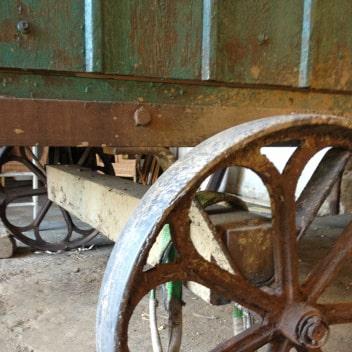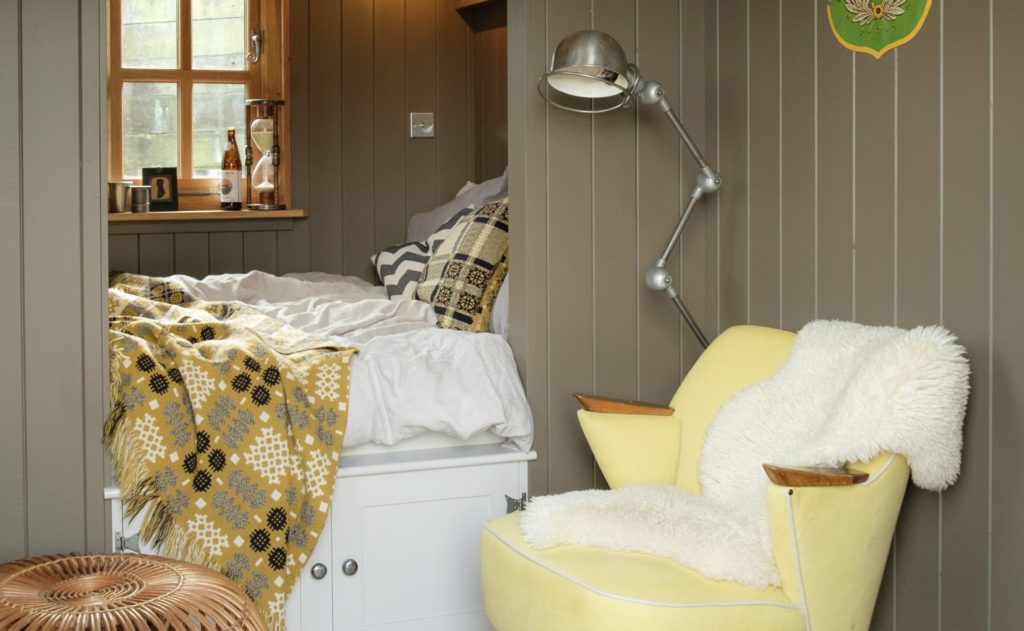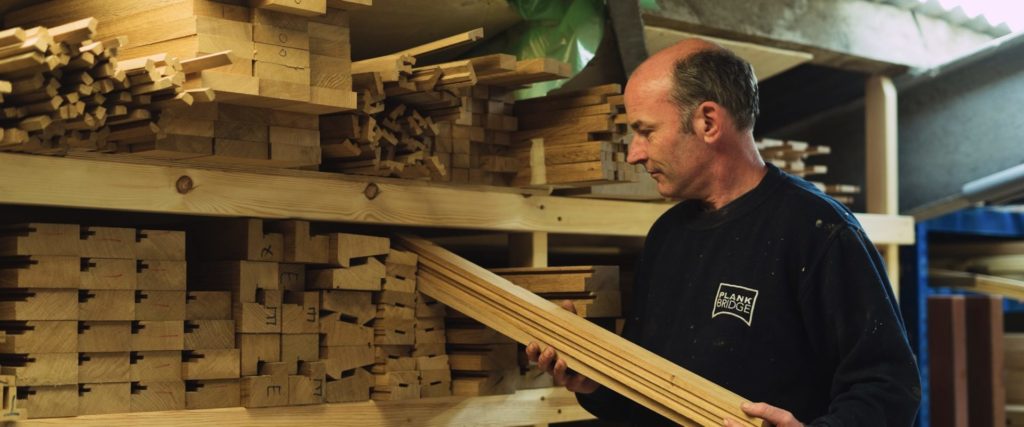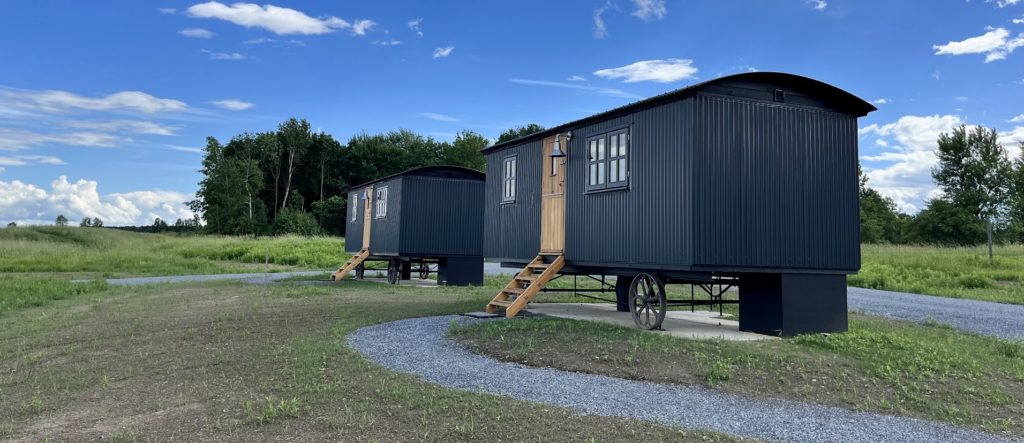The Original Shepherd’s Hut
Originally, shepherd’s huts provided welcome shelter from Britain’s unpredictable weather – as well as offering them a place to rest their head and escape from the elements during the lambing season, which would typically take place during the colder winter months. Owning a shepherd’s hut allowed farmers to practice better land management; the sheep flock was ‘folded’ or fenced with hazel hurdles across the downs, manuring the ground as they went.
A shepherd’s hut had space for a pot belly stove, intended for basic cooking and warmth, a bed and sitting area. There was usually a corner cupboard for bare essentials and veterinary medicines. The bed would often accommodate space underneath for unwell or orphaned lambs. Shepherd’s huts were often made by local blacksmiths, until larger concerns such as Reeves of Bratton, Wiltshire, Farris and Sons of Shaftsbury and Lott and Walne of Dorchester, Dorset produced finely made shepherd’s huts as part of their range.
The 20th Century to today
 As with most things, methods slowly changed and large covered buildings allowed the flock to be housed close to the farm. By the 1950’s many huts had either been pushed into a nearby wood or field corner, or repurposed as store rooms.
As with most things, methods slowly changed and large covered buildings allowed the flock to be housed close to the farm. By the 1950’s many huts had either been pushed into a nearby wood or field corner, or repurposed as store rooms.
It was an original hut, a characterful antique, not far from Thomas Hardy’s cottage that was the inspiration for Plankbridge to start making shepherd’s huts, kickstarting the shepherd’s hut renaissance.
In recent years the popularity of shepherd’s huts has increased once again. With many people seeking luxury staycations, the concept of glamping was lead by pioneers such as Alastair Sawday’s Canopy and Stars; Plankbridge made the huts for one of the first venues when Canopy and Stars launched. Glamping is the perfect blend of outdoor adventure and comfort. For many it is appealing to stay in amazing spaces where you can enjoy being amongst nature but still enjoy the comforts of home. It’s one of the most restorative, exciting and inspiring ways to holiday. Shepherd’s huts provide the perfect glamping experience – they’re solid, are well insulated and provide space for all your needs.
Plankbridge offer four varieties of shepherd’s huts: The Snug, The Cabin, The Lodge or Custom Made – leaving you to choose between a Victorian traditional shepherd’s hut, or something more unique and to suit your specific needs.







